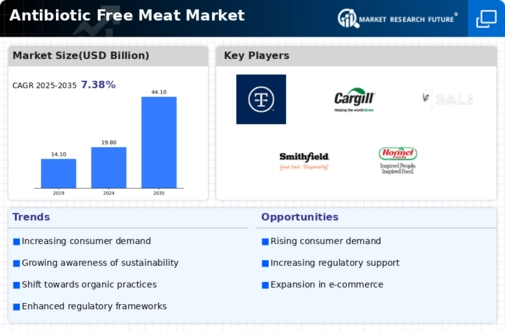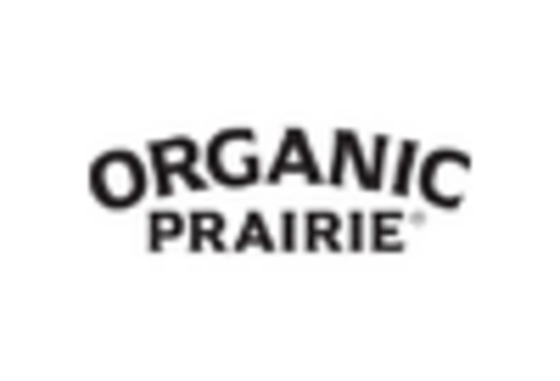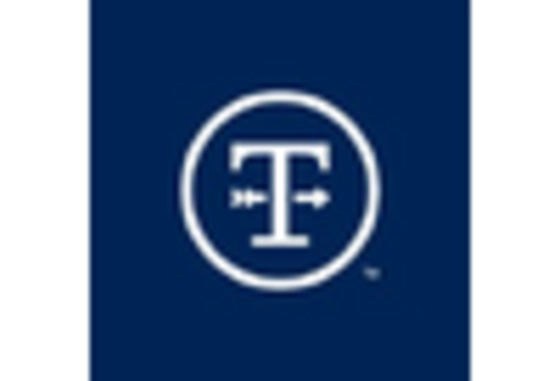The Antibiotic Free Meat Market is currently characterized by a dynamic competitive landscape, driven by increasing consumer demand for healthier and more sustainable food options. Major players such as Tyson Foods (US), Perdue Farms (US), and Maple Leaf Foods (CA) are strategically positioning themselves to capitalize on this trend. Tyson Foods (US) has focused on innovation in product development, launching a new line of antibiotic-free chicken products aimed at health-conscious consumers. Meanwhile, Perdue Farms (US) has emphasized regional expansion, enhancing its distribution networks to reach a broader audience. Maple Leaf Foods (CA) has adopted a sustainability-focused approach, integrating environmentally friendly practices into its operations, which resonates well with the growing consumer preference for ethically sourced meat. Collectively, these strategies are shaping a competitive environment that prioritizes health, sustainability, and innovation.
In terms of business tactics, companies are increasingly localizing manufacturing and optimizing their supply chains to enhance efficiency and responsiveness to market demands. The market structure appears moderately fragmented, with several key players exerting influence while also allowing room for smaller, niche brands to thrive. This fragmentation fosters a competitive atmosphere where innovation and quality are paramount, as companies strive to differentiate themselves in a crowded marketplace.
In August 2025, Tyson Foods (US) announced a partnership with a leading technology firm to develop an AI-driven supply chain management system. This strategic move is expected to enhance operational efficiency and reduce costs, allowing Tyson to respond more swiftly to consumer trends and preferences. The integration of AI into their supply chain could potentially set a new standard in the industry, emphasizing the importance of technology in modern meat production.
In September 2025, Perdue Farms (US) launched a new marketing campaign aimed at educating consumers about the benefits of antibiotic-free meat. This initiative not only highlights their commitment to health and safety but also seeks to build brand loyalty among consumers increasingly concerned about food sourcing. By actively engaging with consumers, Perdue is likely to strengthen its market position and enhance its reputation as a leader in the antibiotic-free segment.
In July 2025, Maple Leaf Foods (CA) unveiled a comprehensive sustainability report detailing its efforts to reduce greenhouse gas emissions and improve animal welfare standards. This transparency is crucial in building consumer trust and aligns with the growing trend towards sustainability in food production. By positioning itself as a leader in ethical practices, Maple Leaf Foods is likely to attract a dedicated consumer base that values responsible sourcing.
As of October 2025, the competitive trends in the Antibiotic Free Meat Market are increasingly defined by digitalization, sustainability, and technological integration. Strategic alliances among key players are shaping the landscape, fostering innovation and collaboration. The shift from price-based competition to a focus on innovation, technology, and supply chain reliability is evident, suggesting that companies that prioritize these elements will likely emerge as leaders in the evolving market.

















Leave a Comment